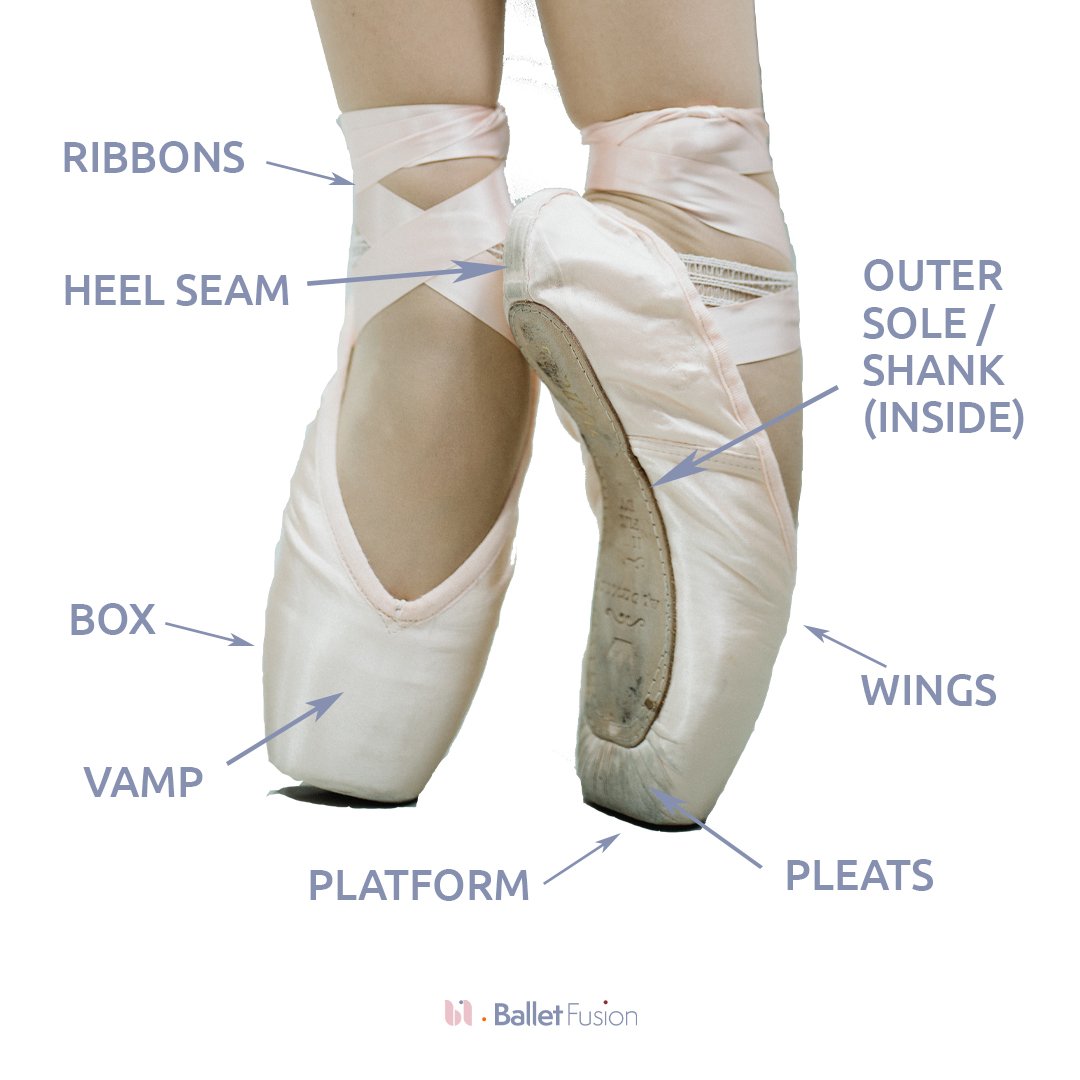Pointe shoes, with their delicate appearance and graceful presence, have long captivated audiences and dancers alike. These magical shoes, worn by ballerinas as they effortlessly glide and twirl across the stage, seem to defy the laws of physics. But have you ever wondered how pointe shoes are made? Behind the scenes, skilled artisans and craftsmen work meticulously to create these iconic ballet shoes, ensuring they provide the perfect balance of support and flexibility. In this article, we will delve into the intricate process of making pointe shoes, uncovering the secrets that lie beneath the surface of this beloved art form.
Thank you for reading this post, don't forget to subscribe!The journey of creating a pointe shoe begins with careful measurements of the dancer’s feet. Each shoe is custom-made to fit the dancer’s unique shape, taking into account the length, width, and arch. The materials used in these shoes are carefully selected, with the outer layer typically made from satin or canvas, while the inside is lined with layers of fabric and padding for added comfort and support. As the shoe takes shape, layers of glue and stitching hold everything together, creating a sturdy structure that allows the dancer to balance on the tips of their toes. From the delicate design of the sole to the intricate placement of ribbons and elastic, every detail is meticulously crafted to ensure that the dancer’s feet are both supported and protected throughout their breathtaking performances.
Join us as we embark on a journey into the world of pointe shoe production, unraveling the mysteries of how these extraordinary ballet shoes are made. Discover the artistry, the precision, and the dedication that go into creating these remarkable instruments of dance. Prepare to be amazed as we delve into the intricate craftsmanship and timeless elegance that make pointe shoes a true marvel of the ballet world.
- Creating the shoe last: A wooden mold is used to shape the shoe.
- Assembling the components: The sole, shank, and upper are carefully stitched together.
- Attaching the satin or canvas exterior: This gives the shoe its elegant appearance.
- Adding the platform: The hard platform at the tip allows dancers to balance on their toes.
- Securing the ribbons and elastic: These help keep the shoe securely on the foot.

How Pointe Shoes Are Made
Pointe shoes are an essential tool for ballet dancers, enabling them to perform on their toes. These specially crafted shoes are made with great precision and attention to detail. In this article, we will explain the step-by-step process of how pointe shoes are made, giving you an inside look into the craftsmanship behind these ballet essentials.
Step 1: Preparing the Materials
The first step in making pointe shoes is preparing the materials. The main components of a pointe shoe include the satin upper, the shank, the box, and the ribbons. The satin upper is cut into specific patterns, depending on the dancer’s foot shape and size. The shank, which provides support and stability, is made from layers of cardboard, paper, or plastic. The box, also known as the toe box, is constructed using layers of fabric and glue to create a sturdy platform for the dancer’s toes. The ribbons are sewn onto the shoe to secure it around the ankle.
Once all the materials are ready, the next step is to assemble the different components and create the structure of the pointe shoe. Skilled craftsmen carefully sew the satin upper together, attaching it to the shank and box. The ribbons are also sewn onto the shoe at this stage. This intricate sewing process requires precise stitching to ensure the shoe’s durability and stability during use.
Step 2: Shoe Lasting and Drying
After the initial construction, the pointe shoe is placed onto a shoe last, which is a foot-shaped mold. This step, known as shoe lasting, helps shape the shoe to the dancer’s foot. The shoe is carefully stretched and molded around the last, ensuring a snug fit. Once the shoe is properly shaped, it is left to dry. The drying process may take several days, allowing the shoe to maintain its shape and stability.
During the drying process, the shoe may undergo various treatments to enhance its performance. Some manufacturers apply layers of glue to the sole for added strength and durability. Others may use specialized techniques to soften or harden specific areas of the shoe, depending on the dancer’s preferences and requirements. These additional treatments further customize the shoe to meet the dancer’s specific needs.
Frequently Asked Questions
Pointe shoes are a special type of ballet shoe that is designed to support dancers while they are dancing on the tips of their toes. They are an essential tool for ballet dancers, especially those who perform in classical ballets. Here are some frequently asked questions about how pointe shoes are made:
1. How are pointe shoes made?
Pointe shoes are made using a combination of traditional craftsmanship and modern technology. The process starts with creating a wooden last, which is a mold of the dancer’s foot. Layers of fabric, such as satin or canvas, are then cut and stitched together to form the upper part of the shoe. The toe box, which supports the dancer’s toes, is typically made from layers of fabric and glue, shaped and hardened to provide structure and support. The sole of the shoe is usually made from layers of leather or suede, which are glued and stitched to the upper part of the shoe. Lastly, ribbons and elastics are attached to the shoe to secure it to the dancer’s foot.
It is important to note that pointe shoes are usually handcrafted by skilled artisans, as the process requires precision and attention to detail. Each shoe is individually made to fit the dancer’s foot, taking into consideration their specific needs and preferences.
2. What materials are used to make pointe shoes?
Pointe shoes are made using a variety of materials to ensure durability, flexibility, and support. The upper part of the shoe is typically made from satin, canvas, or a combination of both. These materials are chosen for their ability to mold to the dancer’s foot and provide comfort. The toe box, which is the reinforced part of the shoe that supports the dancer’s toes, is often made from layers of fabric and glue, shaped and hardened to provide structure and support.
The sole of the shoe is usually made from layers of leather or suede, which provide traction and allow the dancer to glide smoothly on the floor. The insole, which is the inner part of the shoe that comes in contact with the dancer’s foot, is often made from layers of fabric and padding to provide cushioning and support. Lastly, ribbons and elastics are used to secure the shoe to the dancer’s foot, and these are typically made from satin or elastic material for comfort and flexibility.
3. How long does it take to make a pair of pointe shoes?
The time it takes to make a pair of pointe shoes can vary depending on the brand, the level of customization, and the availability of materials. On average, it can take anywhere from a few hours to a few days to make a pair of pointe shoes. This includes the time required to cut and stitch the fabric, shape and harden the toe box, attach the sole, and add the finishing touches such as ribbons and elastics.
It is worth noting that the process of making pointe shoes requires precision and attention to detail, as each shoe is individually made to fit the dancer’s foot. Skilled artisans often handcraft pointe shoes to ensure the highest quality and a perfect fit. This level of craftsmanship and customization can contribute to the time it takes to make a pair of pointe shoes.
4. Can pointe shoes be customized?
Yes, pointe shoes can be customized to meet the specific needs and preferences of the dancer. Some dancers may require additional support or padding, while others may prefer a certain type of fabric or sole material. Customization options can include variations in the width, length, and shape of the shoe, as well as the type and placement of the ribbons and elastics.
It is important for dancers to work closely with a professional fitter or shoemaker who specializes in pointe shoes to ensure a proper fit and customization. These experts can assess the dancer’s feet, evaluate their technique and strength, and make recommendations for the best type of pointe shoe and customization options.
5. How long do pointe shoes last?
The lifespan of a pair of pointe shoes can vary depending on several factors, including the dancer’s technique, the frequency and intensity of use, and the quality of the shoes. On average, a pair of pointe shoes can last anywhere from a few weeks to a few months.
As dancers dance on the tips of their toes, the shoes experience a significant amount of wear and tear. The fabric may become worn out, the toe box may lose its shape and support, and the sole may become worn down. Dancers often have multiple pairs of pointe shoes in rotation to extend the lifespan of each pair. It is important for dancers to regularly inspect their shoes for signs of wear and replace them as needed to ensure their safety and comfort while dancing.

How Ballet Pointe Shoes Are Made | The Making Of
In conclusion, understanding how pointe shoes are made provides a glimpse into the intricate and meticulous process behind this essential tool for ballet dancers. From the initial fitting to the final touches, every step in the production of pointe shoes is crucial to ensure comfort, support, and ultimately, the dancer’s ability to perform with grace and precision. Behind the scenes, skilled craftsmen and women work tirelessly to create these works of art, blending tradition with innovation to meet the demands of ballet’s ever-evolving techniques and styles.
Furthermore, the artistry and craftsmanship involved in making pointe shoes reflect the dedication and passion embedded in the world of ballet. Each pair is carefully crafted to meet the unique needs and preferences of individual dancers, highlighting the importance of personalized and customized footwear. As dancers gracefully glide across the stage, their pointe shoes become an extension of their bodies, allowing them to express their artistry and tell stories through movement. The creation of pointe shoes is a testament to the symbiotic relationship between the dancer and their footwear, showcasing the harmonious blend of art, science, and tradition that lies at the heart of ballet.

